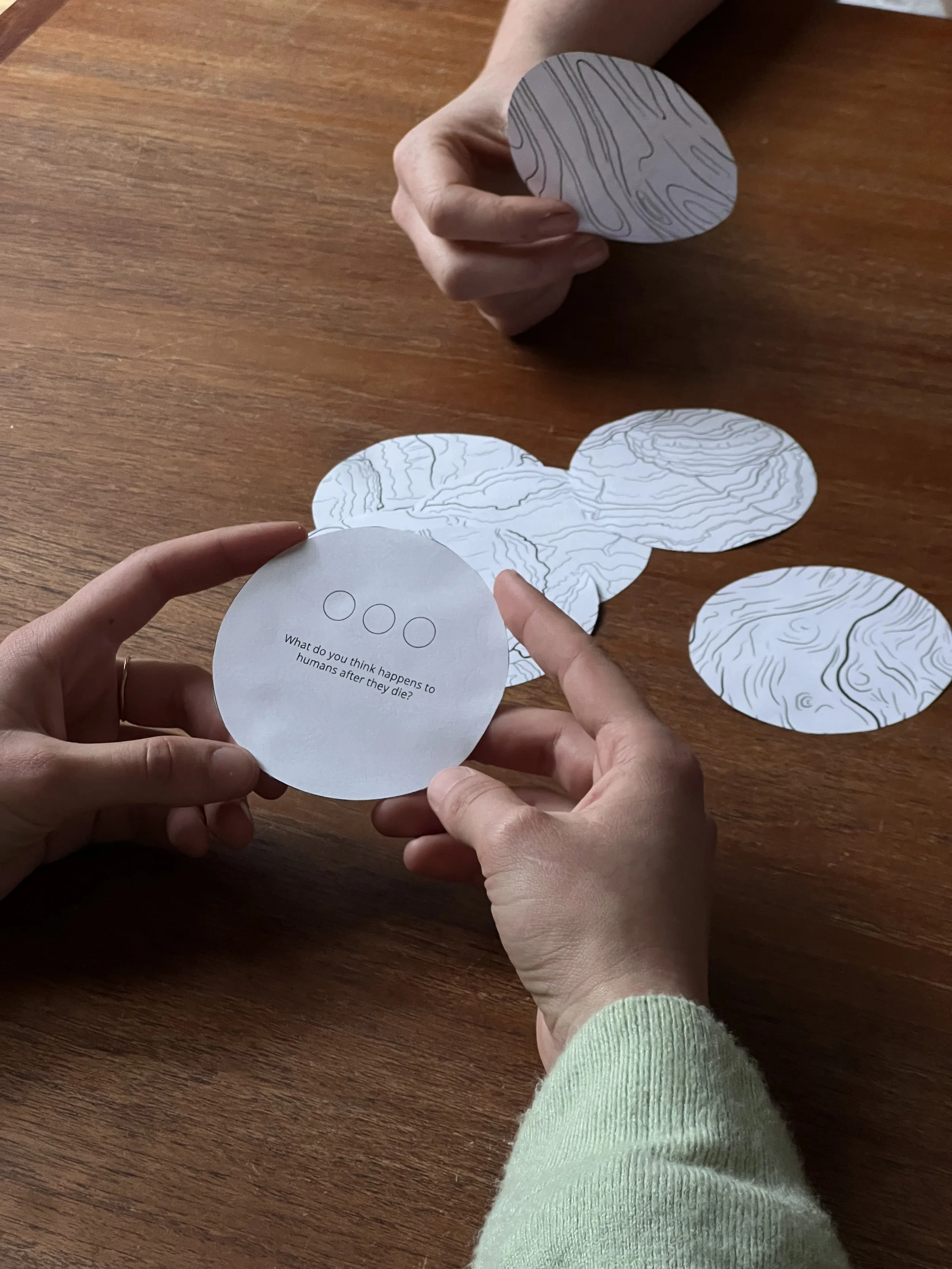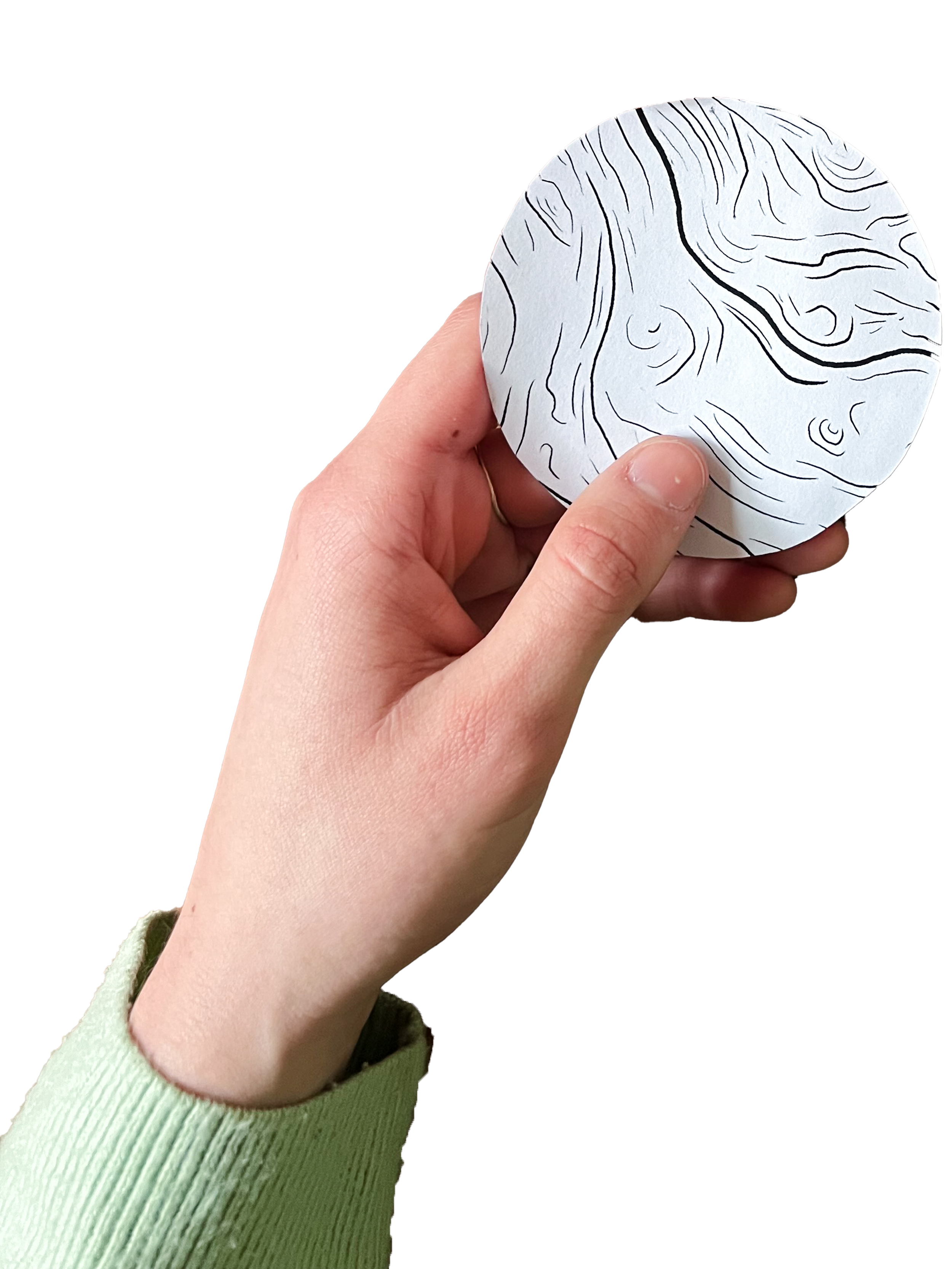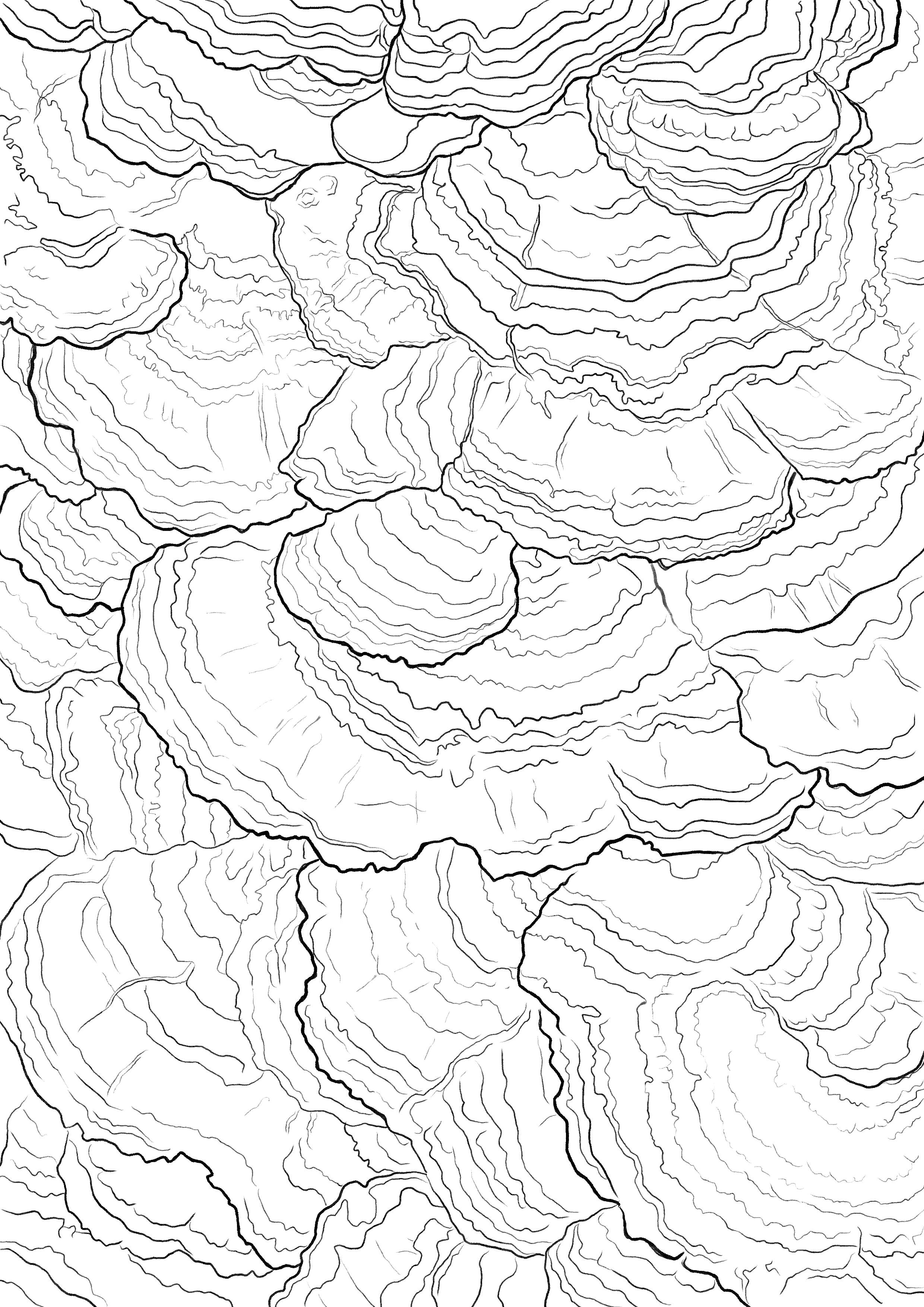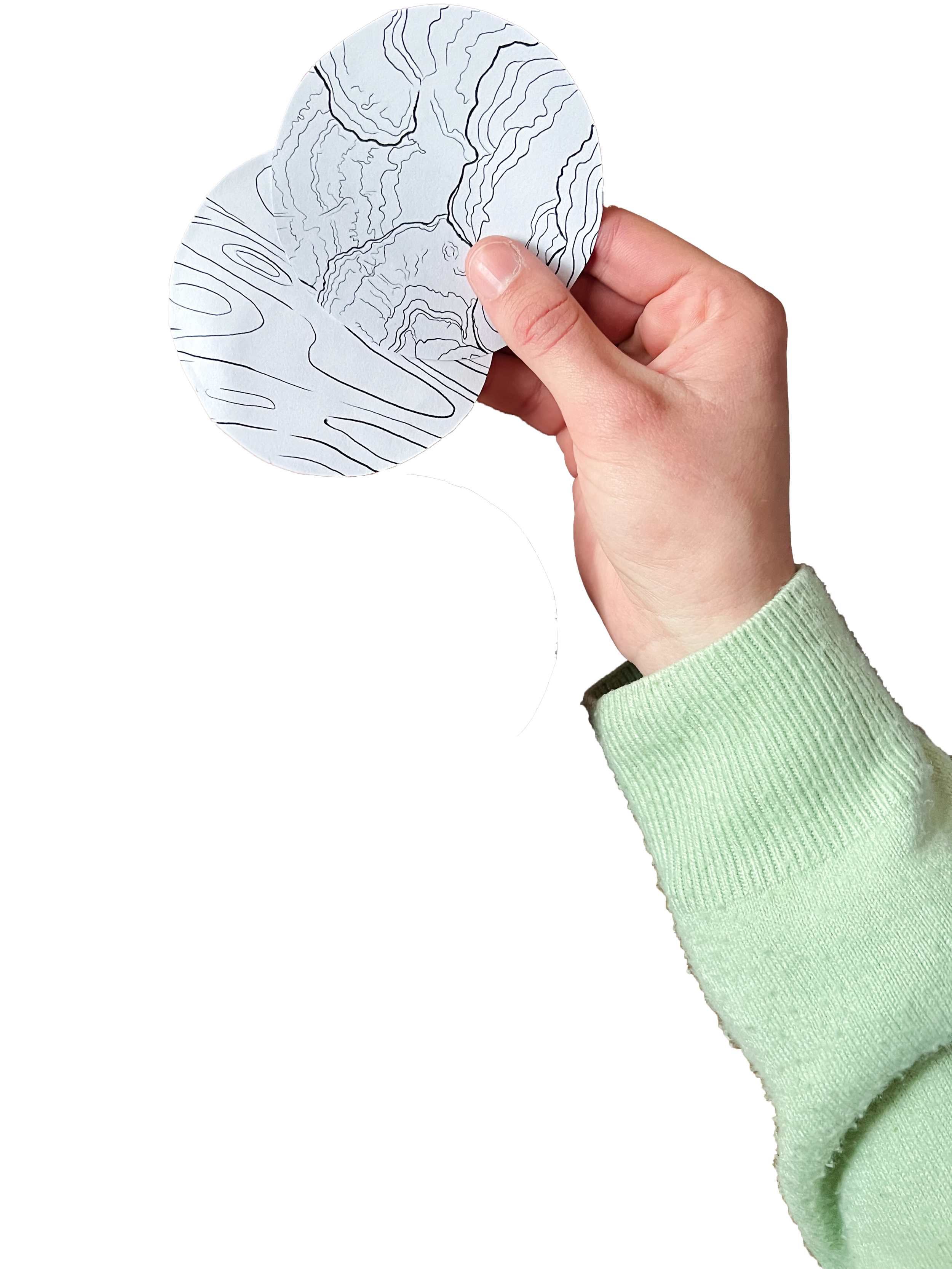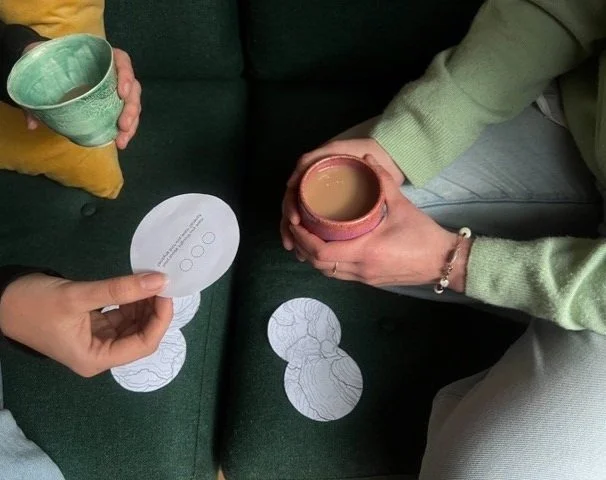
I’m Using the Natural Conclusions Deck right now
I just got here and want to learn more
Natural
Conclusions
A resource for people to talk and learn about sustainable deathcare that uses ritual and community to create comfort
Why?
Australia's existing funeral industry is conservative and lags behind others with respect to sustainable development. Experts in the industry attribute this to a lack of public push. People aren’t aware of the impacts of the existing industry or the sustainable alternatives available here or in the rest of the world. Studies have shown that even self-identified ‘Greenies’ haven’t considered the environmental impacts of their disposition.
Australians aren’t comfortable talking about death, and this death-phobic culture has stifled environmental progression in the funerary industry. That's where this deck comes in!
The Natural Conclusions deck was created to spark and facilitate conversation and reflection about natural cycles, our place within them and what happens when we remove ourselves from them. We hope that by starting conversations about the environmental impacts of conventional deathcare in a comfortable environment, people will gain new perspectives that will begin a cultural shift in how we consider disposition so that the values people live their lives with can continue into their death.
Who is the deck for?
Anyone who is interested, anyone who cares about the environment, anyone who wants to learn more, anyone who wants to start a conversation. We’re not trying to convince you to care about the environment, only to consider it in a context you might not have thought about before. Be gentle; there are situations where adding climate guilt might not be helpful to your own journey or situation.
Only engage if it feels right for you.
We understand that religion shapes many people's end-of-life plans. The deck has some spiritual questions but nothing specifically religious. We aren't trying to change your mind; we are only giving a new perspective, so if anything doesn't work for you, simply replace with a new card.

How do you
use the deck?
There is no wrong way to use the deck! We’ve got a few suggestions, but however it feels most comfortable and interesting for you, any conversation is a good conversation. Come across a term or something you haven’t heard of before? Have a look at the glossary or list of dispersal options in the accompanying Zine.
Here's how the cards work: Each card has a prompt in the form of a question on it, as well as a few circles. The circles correspond to the intensity of the question, the cards with only one are the lightest, while the cards with three are a bit more in-depth.
There are three categories: The back of the cards have a pattern on them, which corresponds with one of the three themes: logistical, environmental and existential cards.
logistical
existential
environmental
Here are some ideas to start engaging with the cards!
Use the Cards Socially
Host a dinner party or an afternoon tea with friends or family and use the deck to start some interesting conversations. Pour everyone a cup of wine or tea and work your way through the deck. Line up the number of circles with the number of drinks. Start with the single-circle cards on the first glass, and hopefully, by the third cup, everyone will be warmed up enough for a three-circle question.
Use the Cards by Yourself
Personal reflection can be just as valuable as a conversation with others. Find a comfortable spot to sit and pull a card for a guided contemplation or a journal prompt.
Choose a Category
Do you want to have a specific kind of conversation around a particular theme? Flip the deck over and sort one of the patterns out to choose the category. Choose water for logistical, bark for environmental or fungi for spiritual questions.
Draw at Random
No specific curiosity? Pull random cards and see where the deck takes you!

Download the Deck!
Download the deck here, and then print it on A4 paper. Make sure you print each page double-sided! Once you’ve printed, cut each card out either as circles or along the dotted lines, and you’re ready to go.
Print the Zines out and follow the instructions on the back to transform them into zines.
Dispersal
Options
-
Alkaline hydrolysis, also known as aquamation, resomation or water cremation, is a method of body disposition that uses water, heat, and alkaline chemicals to break down human remains into liquid and bone fragments. This process mimics natural decomposition but accelerates it. The resulting liquid can be safely returned to the water cycle, while the remaining bone fragments can be processed into ash-like remains for the family, like traditional cremation. Aquamation uses significantly less energy than traditional cremation, produces a fraction of the greenhouse gasses and produces an outcome that can be used as fertiliser for a positive effect. Aquamation is available in Victoria, New South Wales, the ACT, Queensland, and South Australia.
-
Cremation is the process of reducing a deceased body to ash and bone fragments through intense heat and flame, typically in a specially designed furnace called a crematorium. The process usually takes 1-3 hours, after which the remaining bone fragments are ground into a fine, sand-like consistency. This method of body disposition is the most popular option in Australia, chosen by around 70% of our population. The energy required to heat the crematoriums is significant, and the process releases the carbon and heavy metals in the body into the atmosphere.
-
Conventional burial practices in Australia typically involve the body being prepared, often embalmed, placed into a casket and then taken to the cemetery for burial sometimes within a vault and below a headstone. The material, manufacture and transport of the coffin and headstone both have significant environmental impacts, as both are typically sourced and manufactured overseas. The underground infrastructure and the ongoing maintenance of the cemetery have additional ecological impacts.
-
The process of injecting a combination of chemicals into a body after death to slow the decomposition process. Includes benzene, methanol, ethyl alcohol, ethylene glycol (antifreeze) and formaldehyde. Combined with the sealed environment of a coffin, the altered decomposition process creates an effluent called necro slurry, a thick, grey, foul-smelling substance containing chemicals and heavy metals. As it is denser than water, necro slurry has increased dispersion causing it to sink into the ground and contaminate both water sources and natural waterways.
-
A natural burial, also known as green burial, is a burial process that requires the use of non-toxic and biodegradable materials such as caskets and shrouds and prohibits the use of anything that will slow or interfere with the decomposition process. The body is also buried in a shallower grave to further assist the decomposition process. Aims to minimize environmental impact by allowing the body to decompose naturally and return to the ecosystem.
-
Human composting, also known as natural organic reduction (NOR), is a method of body disposition that converts human remains into soil through a controlled, accelerated decomposition process. The resulting soil can be used to nourish plants or returned to nature, offering an environmentally friendly alternative to traditional burial or cremation. NOR isn’t yet legal in Australia (as of October 2024), but it is growing in the United States and other parts of the world.
-
Arrangements made at the time of need after death rather than arranged in advance, including the service, dispersal method, gravesite etc (see also pre-need arrangements).
-
Bereaved refers to a person who has suffered the loss of a loved one through death, typically experiencing grief and mourning as a result.
-
A natural cemetery is typically established in partnership with a conservation organisation that includes a management plan and perpetual protection for the land.
-
A compound word for death and care that encompasses the provision of products and services required after death.
-
The deceased, or person who has died.
-
The emerging alternative to ‘disposal’, concerns the handling and removal of human remains. As nothing can truly be disposed of, only transformed or transported, dispersal acknowledges the transformation with positive connotations and has been largely adopted by sustainable death care alternatives.
-
A marker of a gravesite that honours the dead interred there, can take the form of a headstone, monument, QR code, photo, object, or more natural materials in the case of green burial such as a tree or fieldstone.
-
Decisions and arrangements made before death.
-
A container that surrounds the coffin in the grave to prevent the grave from sinking and to protect the coffin from the elements, further slowing the decomposition process. Typically made from concrete, plastic or metal.
